
APPLIED OPTICS
metrics 2024
Pioneering Research for a Brighter Tomorrow
Introduction
Applied Optics, published by Optica Publishing Group, is a prestigious journal dedicated to the field of optics and photonics. With an ISSN of 1559-128X and an E-ISSN of 2155-3165, this journal serves as a critical platform for researchers, professionals, and students eager to disseminate innovative findings and advancements in applied optics. Established in 1962, it has maintained a significant presence in the academic community, currently holding a Q2 category ranking in various disciplines including Atomic and Molecular Physics, Electrical and Electronic Engineering, and Miscellaneous Engineering as per the 2023 metrics. The journal's reputation is underscored by its solid Scopus rankings, attesting to its influential research output. While not an open-access journal, it continues to offer vital insights and discussions on the latest research topics that are critical to the advancement of technologies in optics, ensuring accessibility to vital knowledge for those within the field.
Metrics 2024
 0.49
0.49 1.70
1.70 1.70
1.70 217
217Metrics History
Rank 2024
Scopus
IF (Web Of Science)
JCI (Web Of Science)
Quartile History
Similar Journals
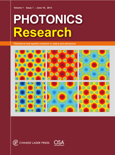
Photonics Research
Transforming Research into Photonic InnovationsPhotonics Research, published by Chinese Laser Press, is a premier international journal that aims to disseminate cutting-edge research and advancements in the field of photonics, encompassing areas such as atomic and molecular physics, optics, and materials science. Since its inception in 2013, this journal has established itself as a vital resource for academics and professionals, reflected in its impressive Q1 rankings in both Atomic and Molecular Physics, and Optics (15/224) and Electronic, Optical and Magnetic Materials (26/284) as per Scopus, underscoring its influence within the scientific community. With substantial contributions to the field, Photonics Research continues to foster innovation and collaboration among researchers, serving as an essential platform for the publication of high-quality studies that push the boundaries of knowledge. The journal operates on an open-access model, ensuring that research is readily available to a global audience, thereby enhancing its accessibility and impact. Whether you are a researcher, student, or professional, engaging with this journal offers a significant opportunity to stay at the forefront of photonic technologies and ideas.

Nonlinear Optics Quantum Optics-Concepts in Modern Optics
Exploring the Frontiers of Light and MatterNonlinear Optics Quantum Optics-Concepts in Modern Optics is a specialized journal published by OLD CITY PUBLISHING INC, focusing on the forefront of research in nonlinear optics and quantum optics. With an ISSN of 1543-0537 and an E-ISSN of 1944-8325, this journal serves as a pivotal platform for the dissemination of innovative concepts and findings in modern optics, significant for both theoretical exploration and practical applications. Established in 2003, the journal's scope encompasses critical areas such as atomic and molecular physics, optical materials, and instrumentation, attracting submissions from a diverse range of interdisciplinary fields. While the journal currently maintains a Q4 ranking in several categories, it continues to strive for higher visibility and impact in the academic community. Researchers and students alike will find valuable insights and contributions that foster advancements in optical science and engineering. With an emphasis on rigorous peer-review, Nonlinear Optics Quantum Optics-Concepts in Modern Optics is committed to enhancing the understanding and application of nonlinear optical phenomena in various technological domains.
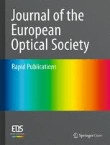
Journal of the European Optical Society-Rapid Publications
Showcasing Timely Innovations in OpticsJournal of the European Optical Society-Rapid Publications, with ISSN 1990-2573 and published by EDP Sciences S A, is a premier open access journal dedicated to advancing the field of optics and photonics since its inception in 2006. Based in France, this journal serves as a vibrant platform for researchers, professionals, and students to disseminate their findings quickly and efficiently. Achieving a commendable Q3 ranking in Atomic and Molecular Physics and Optics (2023), it reflects a growing impact within the scientific community, despite currently holding a 33rd percentile rank among similar publications in the realm of Physics and Astronomy. The journal fosters an environment of rapid communication and collaboration, making it an invaluable resource for those interested in the latest developments and innovations in optical sciences. With open access ensuring broad visibility for all published work, the Journal of the European Optical Society-Rapid Publications is positioned as a key contributor to enhancing the understanding and application of optical technologies.

Chinese Optics Letters
Exploring the intersection of light and technology.Chinese Optics Letters is a prestigious academic journal published by Chinese Laser Press, dedicated to advancing the fields of atomic and molecular physics, optics, as well as electrical and electronic engineering. Since its inception in 2003, this journal has become a significant platform for researchers and professionals to disseminate innovative findings and foster collaboration within these rapidly evolving disciplines. With a commendable Q2 ranking in leading categories including Atomic and Molecular Physics and Electronic, Optical and Magnetic Materials, it ranks favorably within the Scopus database, with notable positions in both engineering and materials science sectors. The journal is headquartered in Shanghai, China, and while additional open access options are not specified, it remains a vital resource for those committed to pushing the frontiers of optical research and applications. As we approach 2024, Chinese Optics Letters continues to play an essential role in shaping scholarly discourse and technological advancement in optics.

Current Optics and Photonics
Advancing Knowledge in Light and TechnologyCurrent Optics and Photonics is a premier journal published by the Optical Society Korea, focusing on the dynamic and evolving fields of optics and photonics. With an ISSN of 2508-7266 and E-ISSN 2508-7274, it provides a comprehensive platform for scholarly communication, emphasizing innovations, advances in technology, and theoretical developments in atomic and molecular physics and optics. Situated in South Korea's vibrant academic landscape, this open access journal aims to bridge the gap between theoretical research and practical applications, fostering collaboration and knowledge sharing among researchers, professionals, and students alike. Although currently ranked in the Q3 category for both Atomic and Molecular Physics and Optics, with a Scopus rank of #183/224, it showcases significant contributions that enhance understanding in these critical areas. The journal encourages submission of original research articles, reviews, and technical notes, with the objective of driving forward the conversation in optics and photonics throughout its converged years from 2017 to 2024. Embrace the opportunity to contribute to this expanding field and become part of a community that is at the forefront of scientific discovery.
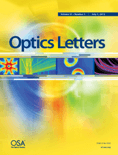
OPTICS LETTERS
Your Gateway to High-Impact Optical DiscoveriesOPTICS LETTERS is a premier academic journal published by the Optica Publishing Group, dedicated to advancing the field of optics and photonics. Since its inception in 1977, it has maintained a strong reputation for publishing high-impact research, holding a distinguished Q1 category ranking in Atomic and Molecular Physics, as well as Optics, making it a vital resource for researchers and professionals alike. With an impressive Scopus rank of #55 out of 224 in its field, OPTICS LETTERS continues to shape the discourse and innovation in optical science. Authors benefit from its extensive international reach, while readers gain access to cutting-edge studies that address both theoretical and applied aspects of optics. Although the journal currently does not offer open access options, its rigorous peer-review standards ensure that every publication meets the highest academic criteria, making it an essential journal for anyone looking to stay at the forefront of optical research.

OSA Continuum
Fostering Innovation Across Disciplines in OpticsOSA Continuum, published by the Optica Publishing Group, is a distinguished open access journal dedicated to advancing research in the realms of Atomic and Molecular Physics, Optics, and Electronic and Electrical Engineering. Since its inception in 2018, this journal has rapidly positioned itself as a significant platform for disseminating cutting-edge findings, achieving impressive Scopus rankings with a 61st percentile in Electrical and Electronic Engineering and 57th in Atomic and Molecular Physics. Based in the United States, the journal not only promotes scholarly dialogue among researchers and professionals but also plays a crucial role in bridging theoretical advances with practical applications in optical and material sciences. Its open access format ensures broader visibility and accessibility of research outputs, fostering innovation and collaboration across disciplines. With its ongoing commitment to excellence, OSA Continuum is crucial for anyone involved in these dynamic fields.
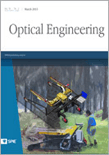
OPTICAL ENGINEERING
Advancing the frontiers of optical innovation.OPTICAL ENGINEERING, published by SPIE-SOC PHOTO-OPTICAL INSTRUMENTATION ENGINEERS, is a premier journal in the field of optical and photonic engineering, dedicated to advancing the science and technology of optics, photonics, and imaging systems. With ISSN 0091-3286 and E-ISSN 1560-2303, this esteemed publication has been contributing to the academic community since its inception in 1972, covering a wide array of topics within its converged years of operation. As a recognized entity, the journal is presently positioned in the Q3 quartile for Atomic and Molecular Physics and Optics, and in the Q2 quartile for Engineering (miscellaneous) as of 2023. The journal’s Scopus ranks reflect its impact and significance, being placed at #129 out of 307 in General Engineering and #137 out of 224 in Atomic and Molecular Physics. Although it does not operate under an open access model, the journal remains a vital resource for researchers, professionals, and students seeking the latest advancements in optical engineering. With a focus on publishing innovative research and technical advancements, OPTICAL ENGINEERING continues to be essential for driving progress in this crucial scientific field.
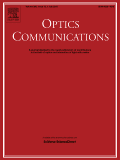
OPTICS COMMUNICATIONS
Connecting Ideas Through Light and InnovationOptics Communications, published by Elsevier, is a prestigious international journal that focuses on the dynamically evolving fields of optics and photonics. With its ISSN 0030-4018 and E-ISSN 1873-0310, this journal has made significant contributions to the fields of Atomic and Molecular Physics, Electrical and Electronic Engineering, Electronic, Optical and Magnetic Materials, and Physical and Theoretical Chemistry, consistently ranking in the Q2 quartile across these categories for 2023. The journal, based in the Netherlands, is recognized for its rigorous peer-review process and aims to publish high-quality research articles that advance knowledge and applications in optical communication technologies. Although it operates under a subscription model, the insightful research published here plays an essential role in informing the work of researchers, professionals, and students alike. With a history dating back to 1969 and spanning well into 2025, Optics Communications remains a crucial resource for cutting-edge developments in optics, catering to a global audience dedicated to innovation in this pivotal science.
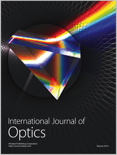
International Journal of Optics
Advancing Knowledge Through LightWelcome to the International Journal of Optics, a distinguished publication dedicated to advancing the field of optics and its interdisciplinary applications. Published by HINDAWI LTD, this open-access journal has been pivotal in fostering knowledge since its inception in 2009. With a robust focus on atomic and molecular physics as well as electronic, optical, and magnetic materials, the journal has carved its niche within Q3 quartile rankings in these categories for 2023, signifying its growing impact and relevance in the scientific community. Researchers and professionals will find a rich repository of innovative and cutting-edge research articles that not only address fundamental aspects of optics but also explore practical applications across various domains. The journal's aim is to promote high-quality research dissemination, enhancing collaboration among scientists and ensuring that pivotal findings reach a global audience. Join us in exploring the dynamic world of optics—where your contributions help shape the future of science.